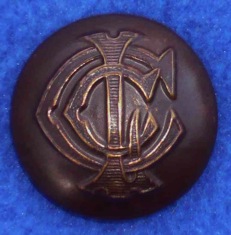London County Council Tramways
Owner London County Council
Took over (tracks) 1st April 1895 (London Street Tramways Company [horse]) - lease-expired lines within LCC area
Operator (lessee) London Street Tramways Company
Took over 27th May 1897 (North Metropolitan Tramways [horse]) - lines within LCC area
Operator (lessee) North Metropolitan Tramways Company
Took over 13th October 1897 (London Street Tramways) - remaining lines
Operator (lessee) North Metropolitan Tramways Company
Took over 1st January 1899 (London Tramways Company [horse; cable])
Operator London County Council
Took over 1st April 1902 (South Eastern Metropolitan Tramways Company [horse])
Took over 22nd November 1902 (South London Tramways Company [horse])
First electric route 15th May 1903 (conduit)
Closed 5th April 1904 (Streatham cable tramway), formerly owned by the London Tramways Company
Took over 7th July 1904 (London, Deptford and Greenwich Tramways Company [horse; oil-gas])
Took over 15th August 1904 (London, Camberwell and Dulwich Tramways Company [horse - operation had ceased in 1900])
Took over 1st June 1905 (Woolwich and South East London Tramways Company [horse])
Took over 1st June 1905 (Lea Bridge, Leyton and Walthamstow Tramways Co Ltd - lines within the Borough of Hackney)
Operator (lessee) Leyton Urban District Council Tramways
Taken over (lessee) 22nd December 1905 (Metropolitan Electric Tramways - Highgate Archway to Highgate Tavern line)
Took over (operation) 1st April 1906 (lines previously leased to the North Metropolitan Tramways Company)
Took over (operation) 2nd October 1906 (London Southern Tramways Company [horse])
Took over (ownership) 20th December 1906 (London Southern Tramways)
Took over (operation) July 1908 (748 yards of the former Lea Bridge, Leyton and Walthamstow Tramways Co Ltd, previously leased to Leyton UDC Tramways
Took over 24th August 1909 (Highgate Hill Cable Tramway [cable])
Took over 18th October 1909 (Metropolitan Electric Tramways) - Lockbridge to Plough Lane line
Joint operation 11th May 1910 (with East Ham Corporation Tramways and West Ham Corporation Tramways) - Aldgate (in LCC area) to Ilford Broadway
Joint operation 20th December 1912 (with Barking Town Urban District Council Tramways, EHCT, and WHCT) - Aldgate (in LCC area) to Loxford Bridge (in Barking)
Joint operation 31st May 1914 (with EHCT, and WHCT) - Aldgate (in LCC area) to Barking Broadway, following withdrawal of BTUDCT from joint running
Last horse service 19th August 1914 - Victoria Park Line, following requisition of the horses by the War Office
Took over (operation/maintenance) 1st July 1921 (Leyton Urban District Council Tramways)
Took over 2nd May 1922 (London United Tramways) — Hammersmith and Shepherds Bush routes
Took over (operation) 4th November 1926 (South Metropolitan Electric Tramways) - Tooting Junction to Mitcham Cricket Green
Taken over 1st July 1933 (London Passenger Transport Board)
Length 167.18 miles
Gauge 4ft 8½ins
Button description Monogram of stylised initials, ‘LCC’
Materials known Brass; black horn; black-coated brass; chrome
Button Line reference [None]
Comment London County Council issued a general 'LCC' button to all its staff across many departments (eg, to the tramways, buses, and ambulances etc). This button can clearly be seen on photos of LCC staff (see link). Chrome buttons are believed to have been used on LCC Ambulance Service uniforms, and almost certainly post date the LCCT by a large margin.
